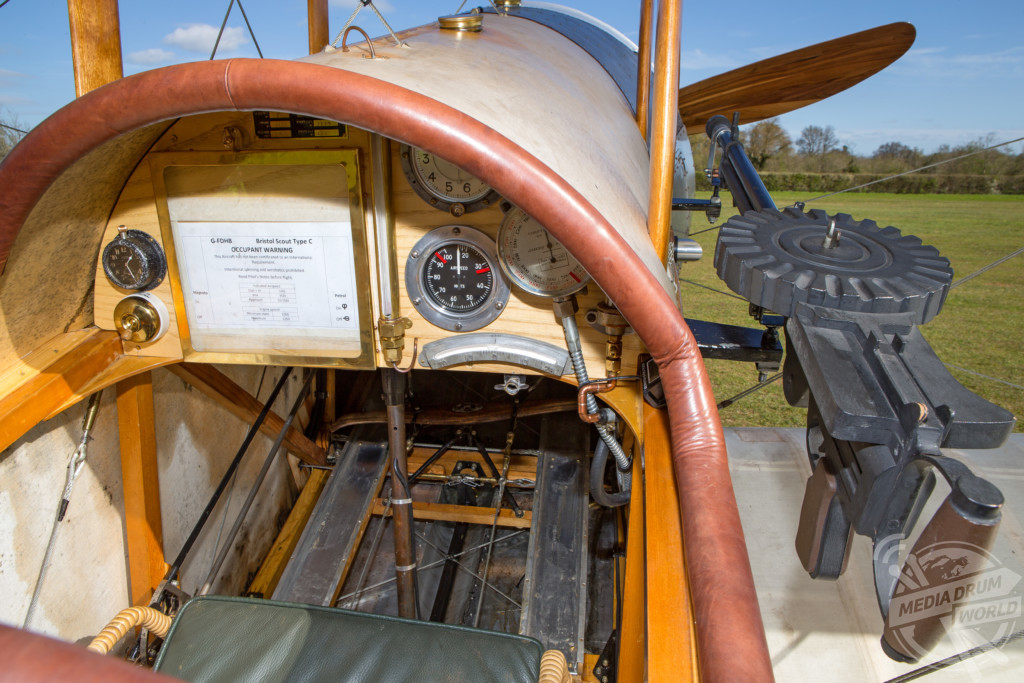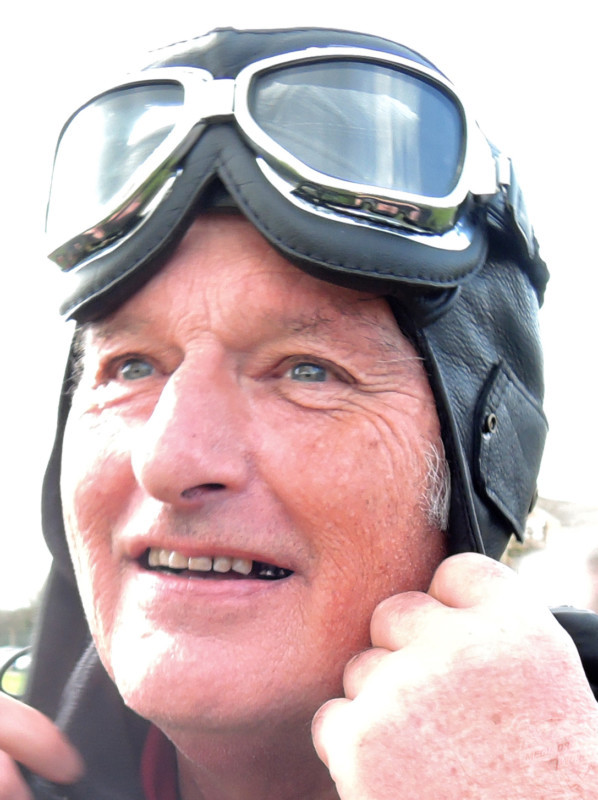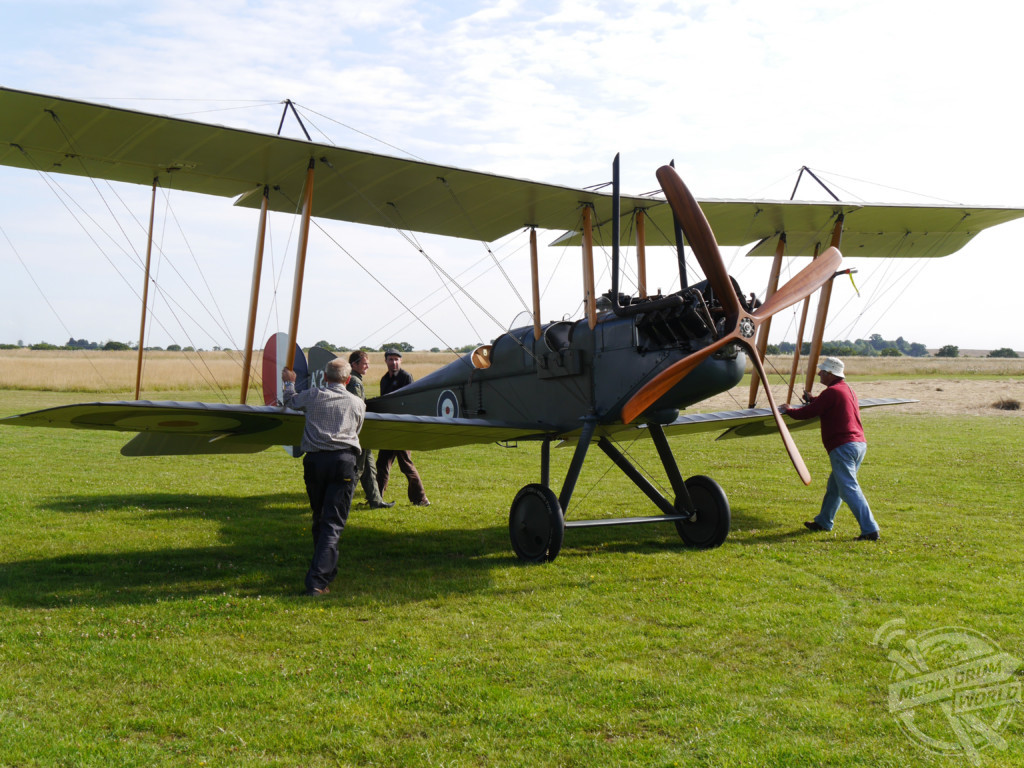By Mark McConville
A NEW BOOK has detailed how a man rebuilt the warplane his grandfather flew during World War One and took it to the skies once more.
In 1913, Frank Barnwell designed the Bristol Scout – which was the fastest and most manoeuvrable warplane for the first eighteen months of the First World War – and became the prototype single-seat fighter from which all later fighters were derived. As a result, Barnwell became a seminal figure in the development of aircraft design.

Mediadrumimages / David Bremner
In 1916, Flt Sub Lt F. D. H. Bremner RNAS flew Bristol Scouts for No. 2 Wing in the Mediterranean. In 1983, his grandson David discovered three aircraft parts from Scout No. 1264 in his late grandfather’s workshop and twenty years later, he, together with his friend Theo Willford, researched the possibility of rebuilding her from these parts.
Bremner’s new book, Bristol Scout 1264: Rebuilding Grandad’s Aircraft, is published by Fonthill Media.

Mediadrumimages / David Bremner
It interweaves the previously unpublished early life of Barnwell and his brother Harold, the operational and technical history of his creation, the Bristol Scout, Bremner’s flying career and the challenges faced by Willford, together with David and his brother Rick, in recreating 1264 and getting her back in the air.
“Along with my brother Rick, I used to listen to Granddad’s stories about flying in the Great War, and although we did not understand them fully at the time, they must have caught our imaginations, because both Rick and I became, and have remained, fascinated with aviation ever since,” writes Bremner in the book’s introduction.

Mediadrumimages / David Bremner
“Of course, we asked Granddad what type he flew, and he told us ‘the Bristol Bullet’. It was only later- much later—that we came across the Bristol Bullet as a nickname for the Bristol Scout, on account of its high speed when it was introduced.
“His favourite stories about the Bullet were about the unsynchronised Lewis machine gun that fired some of its bullets into his own propeller, so they had doped fabric strips to the propeller ‘to stop the splinters coming off in your face’, and how he had acquired a German Bosch magneto from an Italian who had achieved international fame as a motor racing driver before the war.

Mediadrumimages / David Bremner
“However, we did not find out the full details of his service until after he died in 1983. It was then, as we were clearing out his workshop after his death, that we came across three items that set us on the long, long trail that led back here to Thassos. They were the control column or stick (the term ‘joystick’ was derided by the RNAS), rudder bar, and the Bosch magneto taken from his favourite machine: Bristol Scout Type ‘C’, RNAS serial 1264. Now, exactly 100 years later, they were back in the identical machine on the identical spot, waiting to take to the air above Thassos once more.”

Mediadrumimages / David Bremner
The Bristol Scout was a single-seat rotary-engined biplane originally designed as a racing aircraft. Like similar fast, light aircraft of the period it was used by the RNAS and the RFC as a “scout”, or fast reconnaissance type. It was one of the first single-seaters to be used as a fighter aircraft, although it was not possible to fit it with an effective forward-firing armament until the first British-designed gun synchronizers became available later in 1916, by which time the Scout was obsolescent. Single-seat fighters continued to be called “scouts” in British usage into the early 1920s.

Mediadrumimages / David Bremner
David Bremner flew the first hang-gliders and microlight aircraft, and it seems logical that he should now fly one of the first warplanes. He edited Microlight Flying magazine for fifteen years and test-flew most of the current machines on the UK market. He also described how a flight in the reconstructed plane felt.
“The take-off was absolutely fine and I started my display,” he writes.

Mediadrumimages / David Bremner
“For a slow non-aerobatic machine like this, it is important to keep as low and as close to the crowd as you are allowed, so the majority of your attention is being given to that imaginary line on the ground you must keep close to without ever crossing, and keeping just above the level of the trees.
“You maintain full power throughout the display, and at each end do a ‘dumbbell’ turn: turn away from the wind about 45 degrees, then a 270-degree turn into wind, and a final 45-degree turn back on to the display line, while adjusting your height to get back down to the minimum allowed.

Mediadrumimages / David Bremner
“There are a number of variations you can make—a 360-degree turn away from the crowd or a ‘topside’ pass, where you keep the aeroplane tilted towards the crowd by doing a gentle turn down the display line so that people can see the top of the machine.
“All this went fine, and I watched as Paul took off in the F2B. He was going to try and formate on me but never seemed to catch up, and when my time was up, I made a wider circuit and landed in front of the crowd.

Mediadrumimages / David Bremner
“After I had landed, the engine would not respond to control inputs so I shut it down and found the linkage had come undone. It was a sublime moment; never in my entire flying career had I expected to be flying in a proper display, and when I was applauded as we neared the crowd, I felt I would not need an aeroplane to go flying.”

Mediadrumimages / David Bremner







